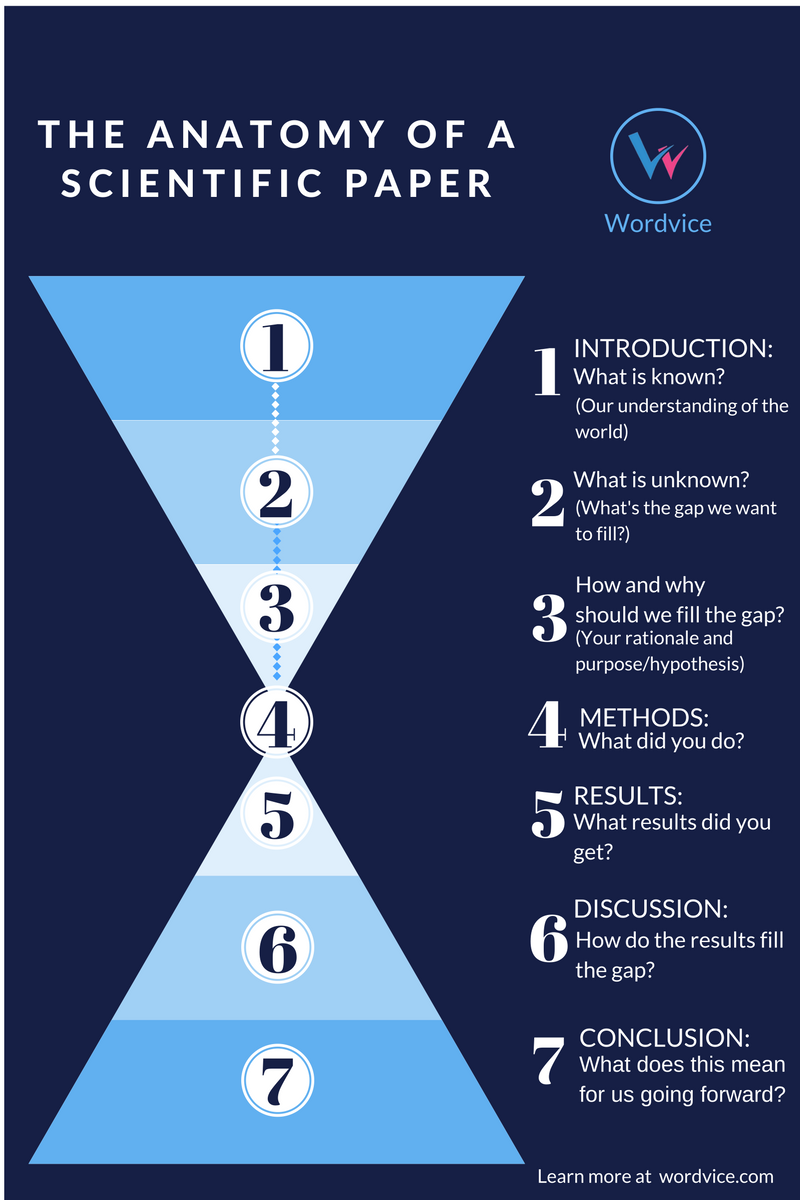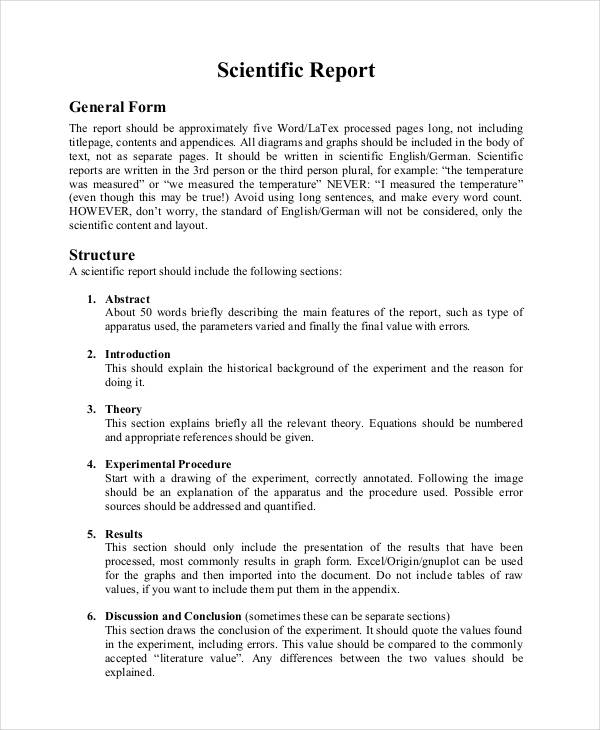
· Introduction. Indicate the field of the work, why this field is important, and what has already been done (with proper citations). Indicate a gap, raise a research question, or challenge prior work Author: John Sisson · For authors who are making their first attempt at writing a research article, it will be imperative to carve out time on a daily basis to work on specific sections of the article – make a schedule and stick to it. 3. Editing. Scientific research and manuscript writing is Abstract: Summary of paper’s main focus-short · Scientific Writing Made Easy: A Step-by-Step Guide to Undergraduate Writing in the Biological Sciences An introduction to the guide. While writing is a critical part of the scientific process, it is often taught secondarily Introduction. The Introduction sets the tone of the paper by providing Cited by: 14
How to Write a Scientific Paper (with Pictures) - wikiHow
Last Updated: March 29, References Approved. This article was co-authored by Bess Ruff, MA. Bess Ruff is a Geography PhD student at Florida State University.
She received her MA in Environmental Science and Management from the University of California, Santa Barbara in She has conducted survey work for marine spatial planning projects in how to start writing a scientific paper Caribbean and provided research support as a graduate fellow for the Sustainable Fisheries Group.
There are 7 references cited in this article, which can be found at the bottom of the page. wikiHow marks an article as reader-approved once it receives enough positive feedback. This article has been viewed 97, times. Even if you are not planning to publish a scientific paper, you may be asked to write in this format for a college course or other program. Because scientific papers are written in a specific format, it is both easy and necessary to learn how to write them well.
Following the style guide and knowing the necessary content of each section will help you to develop your skills as a scientific writer. To write a scientific paper, start with an abstract that briefly summarizes the paper and leads into your introduction. In the introduction, review the available literature on your topic, and discuss the how to start writing a scientific paper your work is trying to fill.
At the end of the introduction, clearly state your hypothesis and objectives. Next, list your materials and methods, followed by your results. Then, conclude your paper with a discussion section and a list of references. To learn how to write the abstract for your paper, keep reading! Did this summary help you? Yes No. Log in Social login does not work in incognito and private browsers. Please log in with your username or email to continue. wikiHow Account, how to start writing a scientific paper.
No account yet? Create an account. Community Dashboard Write an Article Request a New Article More Ideas Edit this Article. Courses New Tech Help Pro New Expert Videos About wikiHow Pro Upgrade Sign In.
Home Random Browse Articles Courses New About wikiHow Easy Ways to Help Approve Questions Fix Spelling Quiz App More Things to Try We use cookies to make wikiHow great. By using our site, you agree to our cookie policy. Cookie Settings, how to start writing a scientific paper. wikiHow is where trusted research and expert knowledge come together, how to start writing a scientific paper.
Learn why people trust wikiHow. Categories Education and Communications Writing Non Fiction Science Writing How to Write a Scientific Paper. Download Article Explore this Article parts.
Sample Paper. Tips and Warnings. Related Articles. Article Summary. Co-authored by Bess Ruff, MA Last Updated: March 29, References Approved, how to start writing a scientific paper. Part 1. Know your audience. If you are in a field that crosses disciplines you might need to write the paper a how to start writing a scientific paper differently than if you were aiming the information at one field.
In some cases, you may want your study to be accessible to all readers, so you need to write how to start writing a scientific paper paper in a way that everyone will understand. In other cases, the audience may be people in the same field that have background knowledge of the subject. Since it is a technical paper, you will need to use some technical language, but avoid jargon for the sake of jargon and use acronyms only when absolutely necessary.
Use active voice. For the most part, journals will require you to use active voice. This is not the case for every journal so make sure to check the style guide before you start writing. Follow the style guide for publication. If you are submitting the paper to a journal for publication, they will have a style guide or author guide that details all of the necessary formatting. Following the author guide is absolutely necessary when submitting the paper for publication. Organize the paper in the proper order.
Every scientific paper is structured the same way. It starts with an abstract that briefly summarizes the paper and then leads into an introduction.
The materials and methods come next, followed by the results. The paper concludes with the discussion section and a list of references.
Check the style guide for the specific how to start writing a scientific paper you are submitting to. Although this is the order the paper will be published in, it is not necessarily the best order to write each section. Part 2. Start with the Materials and Methods section. When you sit down to write your scientific paper, the first section you want to write is the materials and methods section.
The methods should be described clearly and anyone with the proper training should be able to replicate your experiments based on this section. National Institutes of Health Go to source Materials used for each method should be included, with references to the company and catalog number for purchase.
You should include a description of all statistical methods used in the paper. You should also include explanations of any ethical approvals needed for the completion of the studies. Describe the results in the Results section. The results section is pretty self-explanatory. It is the portion of the paper where you describe the results that were obtained during the course of the study.
Results should be reported neutrally and reference any tables and figures included in the paper. National Institutes of Health Go to source You can summarize the findings, but do not discuss the data. That comes later in the discussion. Interpret your data in the Discussion section. This is where you interpret your results and discuss them in the context of what is already known about your topic.
Draw conclusions about the data and talk about future experiments you would like to do to further the study. The goal is to convince the reader that this data is important and they should care about it. Avoid simply repeating what you have already said in the results section. Some journals combine the results and discussion into 1 larger section. Check with the journal before you begin writing. National Institutes of Health Go to source.
Review the literature in the Introduction. The introduction is where you convince readers that the study you have done is important and tell them why it is important. This section should thoroughly review the available literature, discussing the problem, its significance, existing solutions, and the gap your work is trying to fill. National Institutes of Health Go to source State your hypothesis and objectives at the end of the introduction.
Summarize the paper in the Abstract. Save the abstract until the rest of the paper is complete, how to start writing a scientific paper. The length of this section is usually dependent upon the journal, but is generally around words. It is a short summary to tell the readers what you did and what the important findings were. Write a descriptive Title.
The final aspect of the paper to complete is to write the title. You want the title to be specific and reflect the data that is presented in the paper.
This is the teaser for the paper, so you want to grab their attention. At the same time, you want to be succinct and use as few words as possible. Consider which keywords you want to tag so that readers searching for articles on a specific topic will be directed to your work.
Part 3. Choose to present the data as a figure or a table. The way you present the data is completely up to you, but there are some guidelines to help you decide the best way to show it to readers. Tables are used to present the raw data of the experiment while figures are used to illustrate comparisons, how to start writing a scientific paper. Figures are used to compare the experimental results of the different groups in a visual way.
How to Write a Paper in a Weekend (By Prof. Pete Carr)
, time: 11:39Focus: Education — Career Advice: How to Write Your First Research Paper

This section provides guidelines on how to construct a solid introduction to a scientific paper including background information, study question, biological rationale, hypothesis, and general approach. If the Introduction is done well, there should be no question in the reader’s mind why and on what basis you have posed a specific hypothesis 2 days ago · When scientists start writing a research paper, they already have their files with data, lab notes with materials and experimental designs, some visuals, and tables with results. All they need to do is scrutinize these pieces and put them together into a comprehensive blogger.com by: 55 · We will start by outlining the main sections of the article, and will then describe in greater detail the main elements that should feature in each section. Finally, we will also give a few pointers for the abstract and the title of the blogger.com by: 5
No comments:
Post a Comment